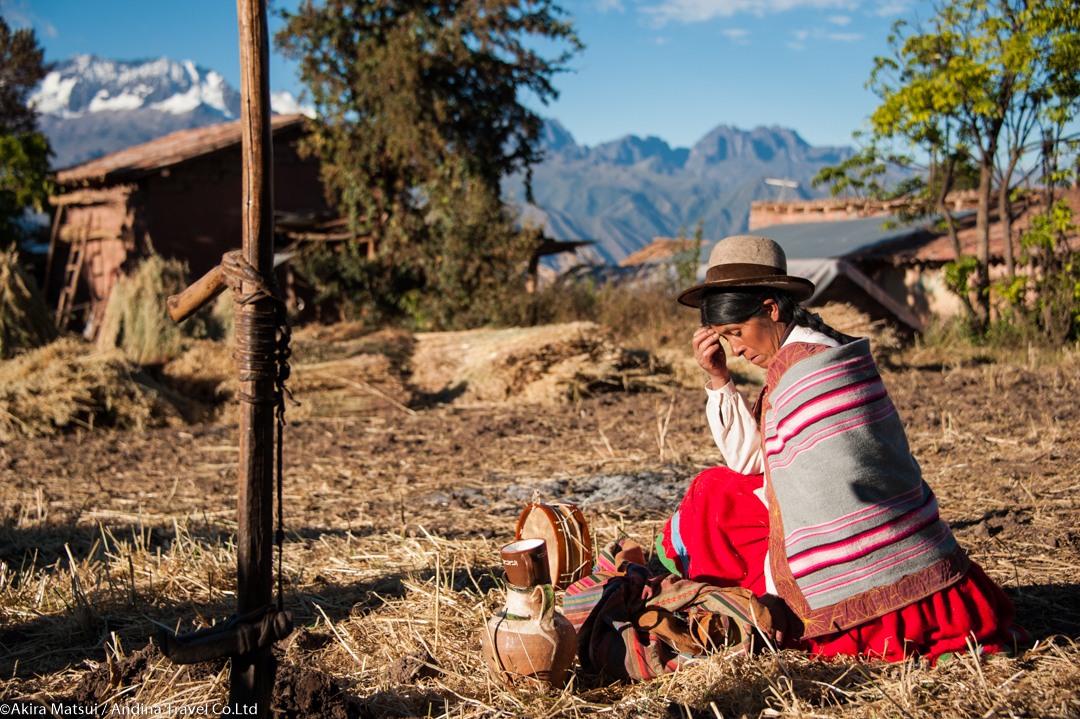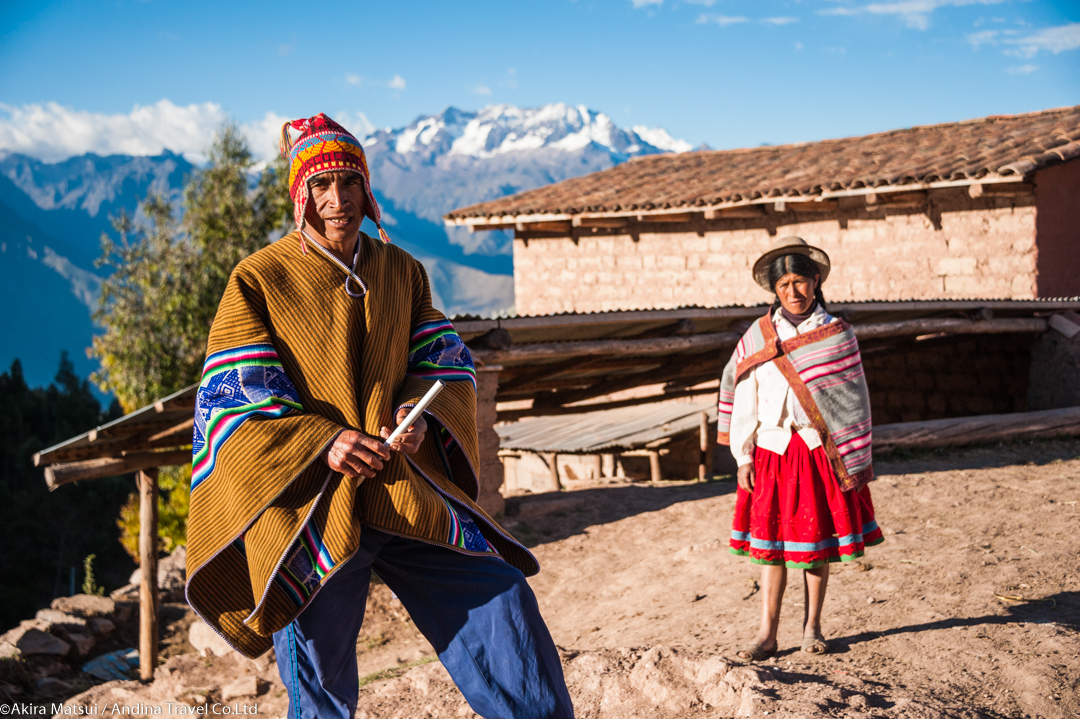Quechua People
・The Quechua are the largest Indigenous group in South America and the descendants of the Inca civilization.
・With an estimated population of over 8 million, they are active in preserving and revitalizing their language and culture.
Location
・Primarily located across the Andean regions
History
・Central to the Inca Empire (13th–16th centuries), spreading Quechua as an administrative language.
・After the Spanish conquest in the 1530s, they faced suppression but retained many cultural practices.
・Today, efforts to preserve language and identity are growing, with Quechua recognized as an official language in several countries.
Culture
・Textiles::Brightly colored garments with symbolic patterns.
・Spirituality:Syncretic mix of Catholicism and Indigenous beliefs (e.g., Pachamama, the earth goddess).
・Agriculture:Adapted to highlands—potatoes, corn, quinoa.
・Architecture & Crafts:Advanced stonework and ceramics.
・Festivals:The Inti Raymi (Sun Festival) is a major cultural event.
Quechua Symbols and Flag

Wiphala Flag
but symbolic motifs includ
・A rainbow-colored checkerboard representing unity, equality, and harmony with nature.
・Official national symbol in Bolivia.
・Icons:The sun, puma, and condor are symbolic in Quechua cosmology.
Language
San languages fall within the broader Khoisan language family.
・Language FamilyQuechuan languages (multiple dialects).・SpeakersOver 8–10 million.
Features
・AgglutinativeUses suffixes to express grammatical relationships.
・SOV word order (Subject–Object–Verb).
・No tones; uses clear suffix-based logic.
・Dialects vary significantly by region.
Common Quechua Greetings and Phrases
| English | Quechua | Pronunciation |
| Hello | Rimaykullayki | ree-my-koo-yai-kee |
|---|---|---|
| Good morning | Allin p’unchay | ah-yeen poon-chai |
| Thank you | Sulpayki | sool-pie-kee |
| Nice to meet you | Ñuqaqa kusikuni | nyoo-kah-kah koo-see-koo-nee |
| Good night | Allin tuta | ah-yeen too-tah |
| Delicious | Sumak mikuy | soo-mak mee-kooy |
| Fun/Enjoyable | Kusikuy | koo-see-kooy |
Region
Continent: Oceania
Region:Primarily in southern China (Guizhou, Hunan, Yunnan), and spread to Vietnam, Laos, and Thailand.
Access Guide
The currency of the Quechua people is the Peruvian Nuevo Sol (PEN).
Quechua Nation
Example Routes to the Quechua Region (Cusco, Peru) from Major Cities
| Departure City | Direct/Transit | Arrival Airport | Flight Time (approx.) | Reference Fare (one-way/round-trip, Economy) |
| Los Angeles | LA→Lima→Cusco | Cusco Airport (CUZ) | ~15–20 hrs | US$900–1,400 |
|---|---|---|---|---|
| New York | NY→Lima→Cusco | Cusco Airport (CUZ) | ~14–19 hrs | US$950–1,500 |
| London | London→EU/USA→Lima→Cusco | Cusco Airport (CUZ) | ~19–26 hrs | £900–1,300 |
| Tokyo | Tokyo→USA→Lima→Cusco | Cusco Airport (CUZ) | ~27–33 hrs | ¥220,000–330,000 |
| Sydney | Sydney→USA/EU→Lima→Cusco | Cusco Airport (CUZ) | ~23–29 hrs | A$1,900–2,600 |
| Hong Kong | HK→USA/EU→Lima→Cusco | Cusco Airport (CUZ) | ~27–33 hrs | HK$11,000–17,000 |
| Shanghai | Shanghai→USA/EU→Lima→Cusco | Cusco Airport (CUZ) | ~28–34 hrs | RMB 9,800–15,000 |
| Singapore | Singapore→USA/EU→Lima→Cusco | Cusco Airport (CUZ) | 29–36 hrs | S$2,400–3,200 |
Note: Fares and times are estimates; actual costs depend on season and route.
Language Origins
・Khoisan languages are believed to be among the oldest language families in human history.
・Genetic studies show the San people retain some of the oldest human DNA lineages.
・Click sounds may have offered advantages for hunting and stealth communication.
Writing System
・Originated in the central highlands of Peru.
・Spread across the Andes via the Inca Empire as a lingua franca.
・Survived colonial repression; now officially recognized in eru, Bolivia, Ecuador.
・Actively revitalized through education, media, and Indigenous rights movements.
Detailed Habitat
・Peru:Cusco, Puno, Ayacucho.
・Bolivia:La Paz, Potosí, Oruro.
・Ecuador:Sierra region.
・Also present in:Northern Chile, Argentina, southern Colombia.
Traditional Games of the Quechua People
1.Sapo (Frog Game)
・Tossing coins into the mouth of a metal frog.
・Popular in festivals; mixes luck and skill.
2.Trompo (Spinning Top)
・Traditional wooden top spun with a string.
3.Kukuy (Throwing Stones/Beans)
・Target game using small objects.
4.Huayno Music and Dance
・Performed for fun and celebration across generations.
Introduction video


The Quechua people represent a living legacy of the Andes—preserving Inca roots while thriving in modern life across South America.
Sources (International Databases)
・風景写真家・松井章のブログ andina-travel.com/blog/peru190825/
